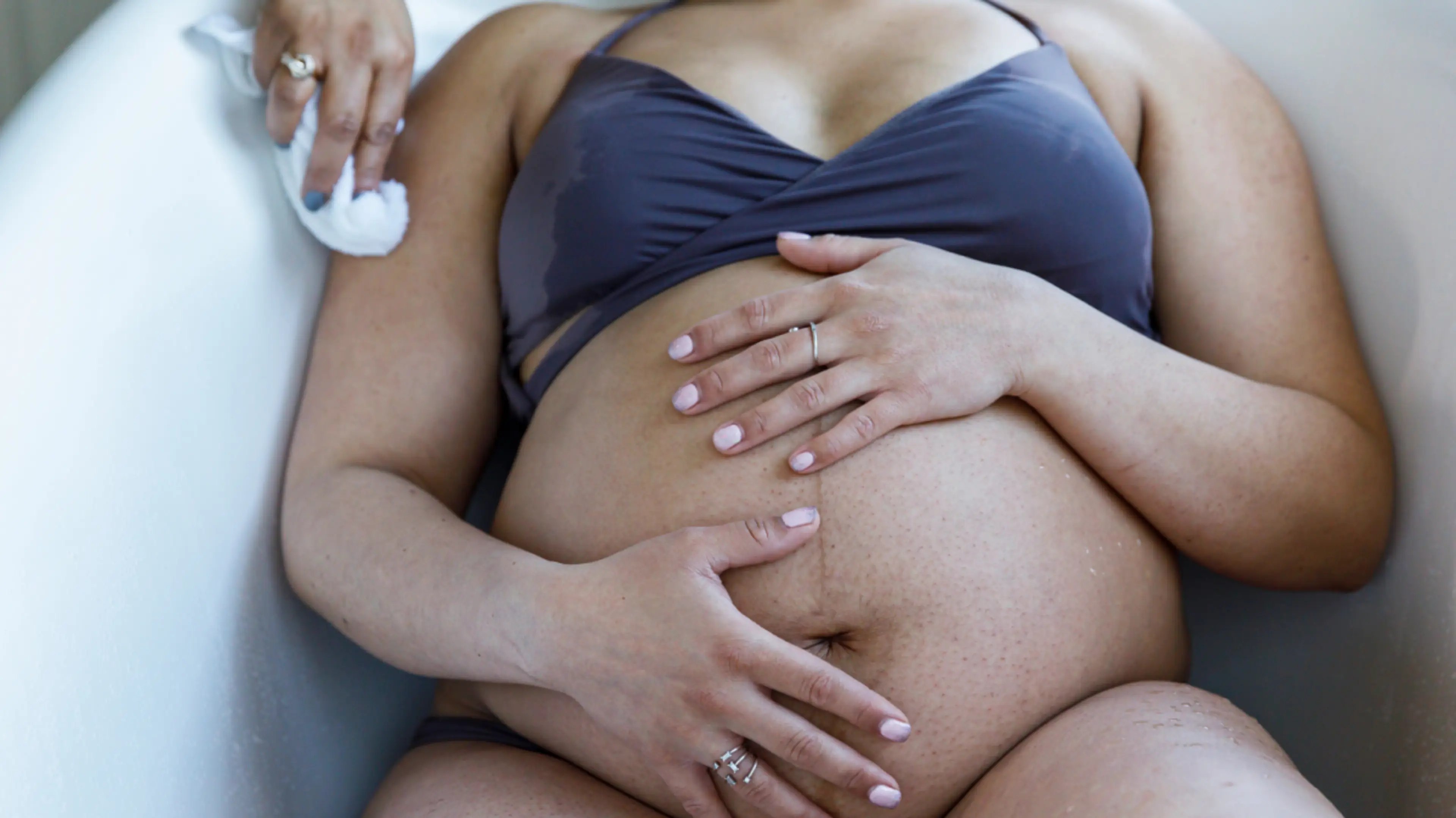For many pregnant people, there are certain parts of childbirth that can feel scary. And if you’ve heard about the possibility of “ripping” or “tearing,” you might have some fear around experiencing it. With no way to know what childbirth will feel like before you experience it, your fear makes sense and is totally valid.
While perineal damage during childbirth can happen, we hope to reduce some of your fears by giving you the facts, recommendations, and support that can help limit vaginal tearing. Read on to find out everything you need to know about ripping and tearing during childbirth, so you can feel more confident before labor begins.
What Is Ripping and Tearing?
When people talk about ripping and tearing during childbirth, they’re typically referring to tearing from the bottom of the vaginal opening toward the anus. This area, the perineum, is the most likely to tear during birth (also called perineal laceration), though some people do experience labial lacerations.
While vaginas are made to stretch to accommodate birthing a baby, tearing is common in first-time births, with rates varying depending on the location of birth, whether you’ve had an epidural, and whether forceps or vacuum assistance are used to deliver your baby. “Tearing during childbirth is very common,’’ says Dr. Kim Langdon, an ob-gyn at Medzino who noted that factors such as the size of the baby’s head and the mother’s anatomy can impact whether tearing occurs. According to the American College of Obstetricians and Gynecologists (ACOG). Between 53 percent and 79 percent of vaginal deliveries 1 will include some type of vaginal laceration.
Degrees of Perineal Tearing
While many people experience tearing, most will not experience the sort of severe tears that lead to longer-term damage. Tears are categorized by degree:
First-degree tears: First-degree tears are the most common and least severe type of perineal laceration. These involve only the skin and tissue directly below the skin between the opening of the vagina and the rectum. These tears sometimes require sutures but often don’t. Those with first-degree tears will usually experience soreness and stinging with urination for several days after birth but will generally feel better in a few days and much better within a few weeks.
Second-degree tears: Second-degree tears, the second-most common type of perineal laceration, involve the skin and muscles of the perineum and sometimes extend into the vagina. These tears often require suturing, which usually happens right in the delivery room. If you’ve had an unmedicated birth, don’t worry, your doctor or midwife will use a local numbing agent to make sure you don’t feel the stitches. People with second-degree tears can expect to feel soreness and discomfort when sitting for a couple of weeks and may experience a burning sensation when they urinate for a few days.
Third-degree tears: Third-degree tears involve the skin and muscles between the vagina and the perineum, extend into the vagina, and involve the muscle that surrounds the anus. Third-degree tears require suturing and, depending on the specifics of the tear, are sometimes repaired under anesthesia in an operating room. These sorts of tears typically take longer to heal, and patients can expect to experience discomfort that lessens in intensity over several weeks. Third-degree tears require follow-up care. Your doctor or midwife will likely want to see you within a couple weeks of giving birth to make sure that you’re healing properly. While they’re not super common, complications like painful intercourse and stool leakage are possible without proper repair, rest, and care.
Fourth-degree tears: Fourth-degree tears are the least common but most severe type of vaginal tear. These tears extend from the vagina through the anal sphincter and into the rectal mucosa, the area where the rectum and the anus meet. These almost always require anesthesia and repair in an operating room. Sometimes, depending on the location and specifics of the tear, specialized care and therapy are required to help ensure proper healing occurs. Fourth-degree tears may take months to fully heal, and complications like pain with sex and fecal incontinence can occur if the tear doesn’t heal properly.
How to Prevent Perineal Tearing
While tearing is common, especially for first-time births, there are things you can do during pregnancy and labor to prevent or reduce the severity of tears:
Consider your provider. Choosing a provider who focuses on physiological birth can lower your chances of tearing or tearing severely. Studies have shown that pregnant people cared for by midwives5 tend to have lower rates of tearing and severe tearing.
Consider the location. Research has shown that people who give birth at home or at a birth center4 experience fewer and less severe tears than those who give birth in a hospital.
Consider an unmedicated birth.3
Try other birthing positions besides laying on your back.5
Ask for warm compresses2 to be applied to your perineum during your pushing phase.
How to Heal Perineal Tears
If you experience perineal laceration, you’ll want to take extra good care of yourself during the postpartum period. Stay in bed as much as possible in the week after having your baby, and take care not to move quickly or stretch in a way that will irritate your tears.
Eating well and being mindful of staying hydrated can also help you heal more quickly. “The body needs extra calories during healing,” says Aubrey Phelps, a registered dietitian who specializes in perinatal and pediatric nutrition. “Bone broth, collagen powder and vitamin C-rich foods promote collagen synthesis, and preformed vitamin A (like that found in eggs, liver and full fat grass-fed dairy) promotes healthy skin and tissues.”
If you experience burning when you urinate, squirt a peri bottle of warm water over your perineum as you urinate or, if the burning is severe, consider peeing into a sitz bath filled with warm water.
If you’re experiencing general soreness and discomfort, consider simple remedies like applying a cool compress or taking over-the-counter medication. “Applying peri-ice packs and taking a pain reliever medication that’s approved by your provider can help,” says Venus Standard, a certified nurse midwife and assistant professor at the University of North Carolina School of Medicine. “There are also peri-pain relieving sprays that can be applied directly to the perineum.”
Before you give birth, consider making yourself a bathroom basket that includes pads, a peri bottle and pain relieving spray so that you don’t have to scramble for your supplies each time you use the restroom.
While the prospect of ripping or tearing during childbirth can feel scary, it’s helpful to know that there are things you can do to lower your risk of a severe tear. It’s also reassuring to know that your care provider is well-versed in repairing any perineal damage and giving you the tools and advice you need to heal and feel better.

















